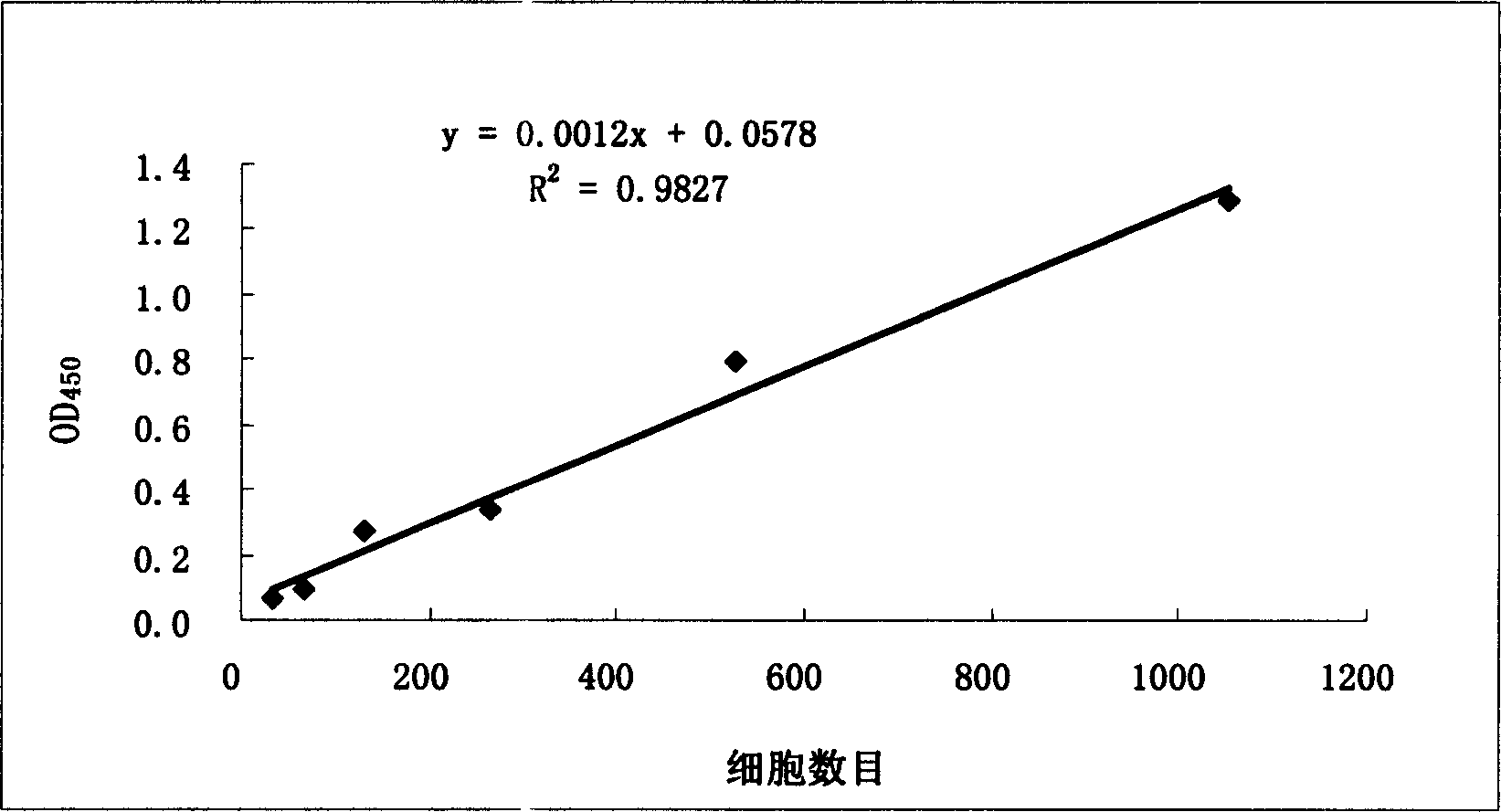Detection probe for Scrippsiella trochoidea
A technology for detecting probes and Steineria, which is applied in the determination/inspection of microorganisms, biological testing, material inspection products, etc., and can solve the problems of large fluctuations in test results, difficult operation, and small number of capture probes, and achieve Easy to find and realize, good probe applicability and high stability
- Summary
- Abstract
- Description
- Claims
- Application Information
AI Technical Summary
Problems solved by technology
Method used
Image
Examples
Embodiment
[0030] Example: Qualitative and quantitative detection of Steineria coniculae by using the S1 enzyme protection analysis for rRNA and the sandwich hybridization technique.
[0031] In this example, the S1 enzyme protection analysis technique and the sandwich hybridization technique are combined to realize the qualitative and quantitative detection of the marine red tide organism Scrippsiella trochoidea, and the steps are as follows:
[0032] 1.1 The search for the specific region of Steineria cone rRNA and the design and synthesis of the S1 enzyme protection analysis probe
[0033] By determining the ribosomal small subunit 18S rRNA sequence of Steineria conicerii and performing multiple sequence comparisons with the rRNA sequences of other algae, it was found that the 230-300 region of the small subunit rRNA was different from other algae, and the sequence of this region was determined to be a characteristic sequence ; Design and synthesize the S1 enzyme protection analysis p...
PUM
 Login to View More
Login to View More Abstract
Description
Claims
Application Information
 Login to View More
Login to View More - R&D
- Intellectual Property
- Life Sciences
- Materials
- Tech Scout
- Unparalleled Data Quality
- Higher Quality Content
- 60% Fewer Hallucinations
Browse by: Latest US Patents, China's latest patents, Technical Efficacy Thesaurus, Application Domain, Technology Topic, Popular Technical Reports.
© 2025 PatSnap. All rights reserved.Legal|Privacy policy|Modern Slavery Act Transparency Statement|Sitemap|About US| Contact US: help@patsnap.com


